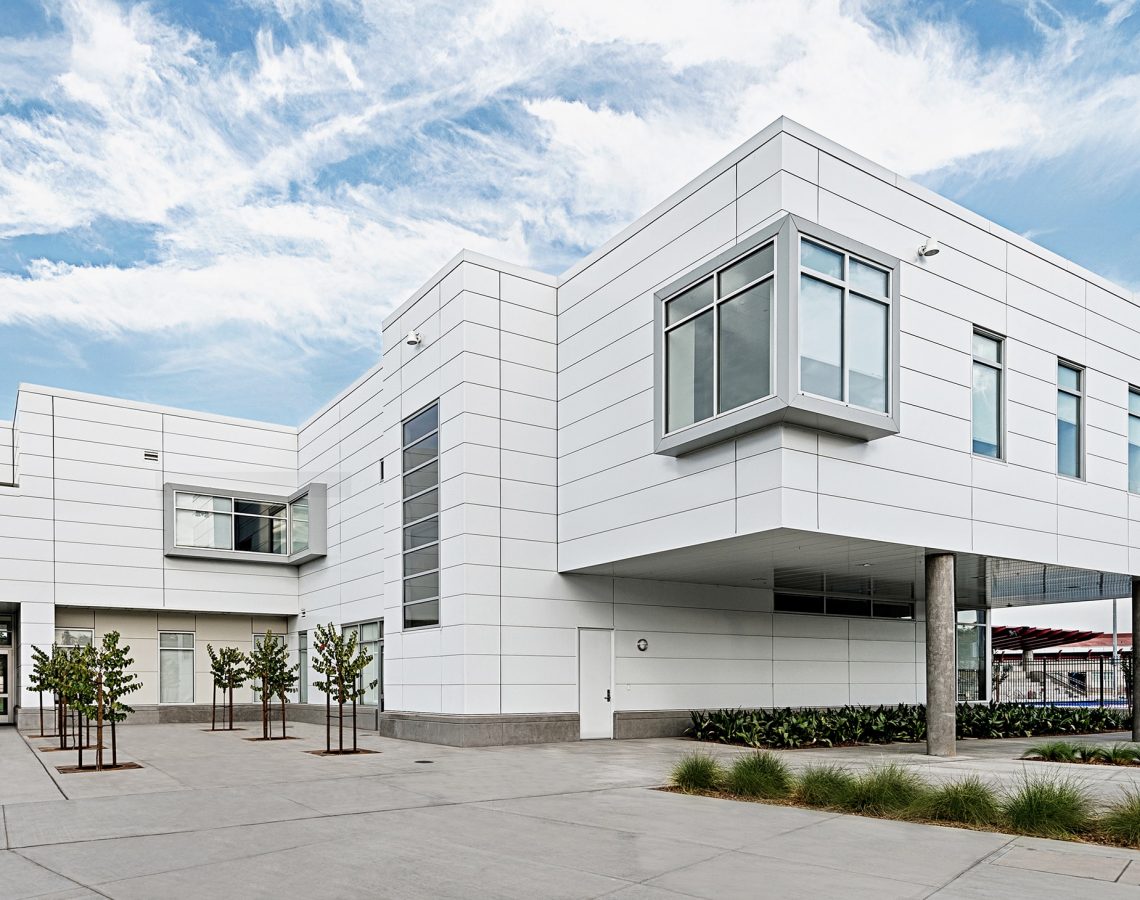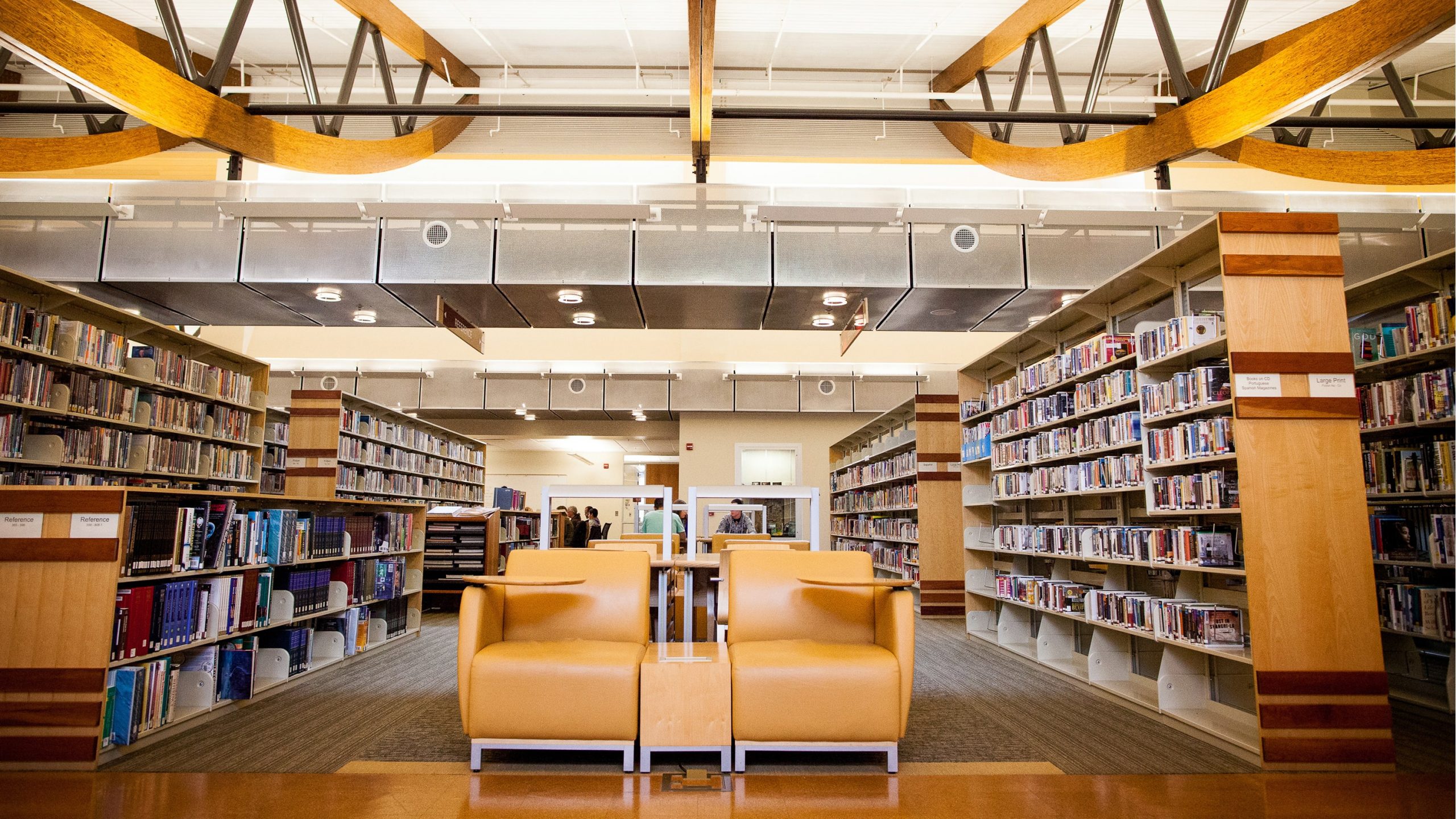Our Favorite Examples of Architecture & Great Building Designs

Author: Jamie & Stephanie
As architects, we create unique architectural designs to solve the issues of our clients and the people who use and occupy our buildings. However, we’re also students of architecture with passion for innovative buildings and examples of designs.
Read on to learn about what two of our architects, Stephanie Say and Jamie Steinmetz, AIA, LEED AP, look for in building design as they share their favorite examples of local, regional, national, and international architecture.

What Makes a Good Building Design?
We like to joke that a great building design is anything that’s not a beige stucco box. However, from an architect’s perspective, we look for qualities and characteristics that define not just the look of a building, but its relationship with its stakeholders and users and how it makes us feel.
Great building designs generally have three qualities: responsiveness, appropriateness, and experience.
Responsiveness of Great Building Design
Responsiveness is about how the building responds to the users, the climate, and the site.
- Users: How do the site and building enhance the daily lives of the intended users and solve issues related to the specific use, industry, and ease of adaptation or flexibility?
- Climate: Are the site and building sustainable and environmentally friendly? Is there an awareness of nature and innovative uses of materials at the time of construction? We’re at a time where minimizing environmental burden needs to be a baseline rather than an amenity.
- Site: An urban site is very different from a rural site. How well does the building adapt its context?
Appropriateness of Great Building Design
Appropriateness is about how the design is created within the constraints of limiting factors, such as budget and timeline.
For example, while an architectural design of a five-story industrial complex may be more comprehensive and visually impressive than a small library, is it really a better building design if it had a budget of 20 times the library and took five years longer to build?
Great building design is possible at any budget and with any timeline—that is where our expertise comes in! It is making small decisions along the way that are the best possible, given all of the factors like cost, quality and schedule impacts. It is not reserved for large, complex projects with huge budgets.
Experience of Great Building Design
Experience is about the indescribable feeling you get from the design, something you can’t put into words. This includes the beauty of the design, from the macro layers of building shape and size to the smallest details.
Often, this means that a great building design will speak to your senses. Many of our favorite spaces are thoughtfully choreographed with light, texture, and acoustics, which reinforce the building’s purpose or concept.
A great building design experience could be something like walking into a space and marveling over a specific detail, such as the way the sun hits the wall or floor, knowing the special thought that went into making that experience happen.
This transcendental feeling is one of the key distinctions that set great building designs apart from the rest.
Our Favorite Building Designs & Examples of Architecture
We’ve asked two of our favorite architects to share some of their most loved building designs, ranging from local buildings to structures halfway around the world.
Local Architecture – Best Building Designs in Fresno
Hall of Records, Fresno, CA (Stephanie)
The Fresno County Hall of Records has such a cool Art Deco interior. pic.twitter.com/DZzdJgh95I
— Dan Zack (@plannerdanzack) July 6, 2021
The Hall of Records building in Downtown Fresno.
It was designed by Allied Architects in 1935 and has been remodeled many times over the years. To us, it’s one of the most fantastic examples of Art Deco and Neoclassical architecture in Fresno.
As an immaculately preserved Art Deco/Neoclassical building in Downtown Fresno, it has a bevy of remarkable building details, inside and out:
- Notched corners at the exterior
- Aluminum spandrel glass
- Terrazzo floors
- Black, marble baseboards
- Light fixtures, drinking fountains and guard rails incorporated into the Art Deco Style
Robert E. Coyle United States Courthouse, Fresno, CA (Jaime)

Another one of our favorite local projects is the Robert E. Coyle United States Courthouse located in Downtown Fresno, designed by Moore Ruble Yudell.
Despite being a high-rise building with a simple material palette, a closer look reveals that no two facades are alike, and the composition provides a lot of visual interest as you move around the building. The sculptural precast panels are beautiful and multifunctional—they
- Provide blast resistance
- Ensure durability and longevity of the structure
- Mediate the building scale with their texture and patterns
- Highlight daily and seasonal variation of sunlight
Unlike traditional American courthouse architecture, the building design prioritizes a strong connection to the outdoors. The lobby is dominated by views of the large public garden, circulation is placed along the exterior like porches with vast views of the city skyline, and the building is capped with a roof terrace with views of the Sierras.
The interior keeps a reverence for traditional civic materials, such as stones and woods, but they’re detailed together in a clearly modern style.
Despite not being traditional for its use, this building still exudes a strong civic presence.
Regional Architecture – Best Building Designs in California
Gamble House, Pasadena, CA (Stephanie)
Arroyo Walk 👟 BVRs Resume 🔥 - https://t.co/1Tnj9h8zvF pic.twitter.com/LPLFePO4WV
— Gamble House (@FriendsofGH) July 27, 2021
Besides being famous for being featured in the backdrop of the sci-fi movie “Back To the Future” as the house of central character Doc Brown, the Gamble House in Pasadena is a terrific example of a Craftsman-style personal residence, designed by brothers Charles and Henry Greene in 1908.
The home was designed for David and Mary Gamble (of Proctor & Gamble), and features the impeccable attention to detail that characterizes that era’s Craftsman style.
Some of the remarkable external features of the home include large overhangs, and deep, rich wood and colors. Inside the home, the exquisite woodwork, fireplace nooks, and the second- and third-floor sleeping porches are things to look for on your next tour of the house.
National Architecture – Best Building Designs in the United States
Chicken Point Cabin, Idaho (Jaime)
Chicken Point Cabin — by now a classic example of groundbreaking contemporary architecture — showcases the exception to the rule of door-making.
— Architizer (@Architizer) January 18, 2018
Here's how @olsonkundig detailed the world’s most beautiful door: https://t.co/qR1PAVq6Ob pic.twitter.com/dY0MtBEWx5
The Chicken Point Cabin, designed by Tom Kundig, is strikingly beautiful because it perfectly balances simplicity in form and complexity in detail.
Specifically, the only direction the client gave Kundig was to design a small house with a big view. That direction resulted in the development of a 20-foot by 30-foot, six-ton window that is operated with a counterbalanced gear system so simple that it can be hand-cranked open by a 6-year-old child. That gear system is, itself, a sculptural piece of artwork on the wall.
Another sculptural element in the house, the fireplace, functions as the “hearth at the center of the home,” provides warmth, is the main structural post for the home’s steel frame, and is constructed from a salvaged 4-foot diameter steel pipe left over from Alaskan Oil Pipeline project. The idea of one element doing several things well is a philosophy that PHA has adopted in developing our work and is one of the main reasons the Chicken Point Cabin is one of our favorite building designs.
Global Architecture – Best Foreign Building Designs
Villa Verde, Constitución, Chile (Stephanie)
Villa Verde Housing
— Magnificent Modern Multifamily (@modernmultifam) October 28, 2020
Constitución, Chile
by ELEMENTAL
Photos: Suyin Chia, Cristian Martinez pic.twitter.com/5CY357tjud
Sometimes the idea or message behind a building—its experience—is so inspiring that it dwarfs the architectural elements of a design.
That’s the case with the Villa Verde public housing project in Chile, which Alejandro Aravena of Elemental designed in 2012 as part of rebuilding efforts following a large earthquake and tsunami that destroyed the city of Constitución.
The development was half-built, meaning only half of the housing was designed and fully built out to provide the immediate need of disaster relief housing. The other half was left unfinished for tenants to customize and build out in the future.
This innovative idea to let future residents decide how to finish their home—to function well for them—is such a strong message that it stands out as a uniquely special example of great architectural design.
Barcelona Pavilion, Barcelona, Spain (Jaime)
Barcelona Pavilion (1929) by Mies van der Rohe and Lilly Reich, an emblematic work of the Modern Movement, has been exhaustively studied and interpreted as well as having inspired the oeuvre of several generations of architects. Learn more https://t.co/V8YMBz56Am pic.twitter.com/6Y47lJdVRK
— Bauhaus Movement (@BauhausMovement) March 28, 2020
The Barcelona Pavilion in Spain is a simple form with extravagant materials. Originally called the German Pavilion, Mies van der Rohe and Lilly Reich designed the space for the 1929 International Exposition in Spain to represent the new, progressive Germany following World War I.
While other pavilions at the exposition were designed to house exhibits, Mies decided to make the building itself the exhibit. The building was placed to block direct passage through the site, forcing visitors to meander through the building while observing framed views and an orchestrated experience.
The supporting structure for the building is also a marvel. A low-profile roof appears to float above the interior while being supported by eight slender cruciform columns—far ahead of its time for engineering in the 1920s.

Architectural design is more than just the look of a building—it’s about the connection and feelings it evokes from its use, location, and situation. While we don’t look to copy these great building designs for our own projects, appreciating the amazing work by other architects helps us create designs that embody the same qualities as those who went before us.
Check out our great building designs in our PHA Portfolio.
